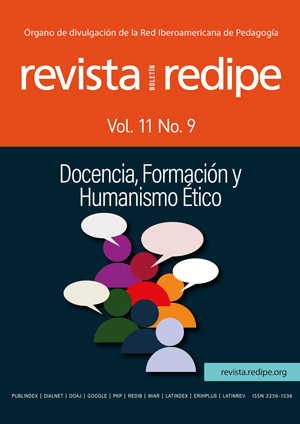Teaching mathematics with a humanistic approach: The preschool environment
Main Article Content
Keywords
Educational ethics, Learning modalities, Diferential planning, Fuzzy sets, Complexity
Abstract
By choosing teaching as a profession, we enter an unknown and dynamic dimension. The questions that arise in the exercise of teaching mathematics go far beyond the list that we can make from our previous contact with our teachers. During years of study, we have met dozens of teachers who have tried with the best intentions to provide us with knowledge for the future. We have not always taken advantage of it, and we have not always accepted their way of presenting them. Between frustration and satisfaction, we have transformed what was future into present. Today it is our turn to take the educational role. Inspired by ethical principles and equipped with the necessary knowledge, we can make the math lesson a successful experience to our students. The text below provides a glimpse into the possibilities of providing a meaningful, enjoyable, and interesting connection to the youngest learners we encounter in the education system: the preschool students.
References
Arboleda, J.C (2020): Hacia una didáctica comprensivo edifcadora. En: Hacia una didáctica humanista. Uned, España- Redipe (2022). Matemáticas comprensivo edifcadoras. Editorial Redipe, Estados Unidos.
Ben Peri, H. (2016). Emmanuel Lévinas - El Contrato educativo: Responsabilidad, esperanza, alianza. Editorial Hakibutz Hameujad
Chevallard Y. (1992). Concepts fondamentaux de la didactique: perspectives apportées par une approche antropologique. Recherches en didactique des mathématiques, 12(1), 73-112. https://revue-rdm.com/1992/ concepts-fondamentaux-de-ladidactique/
Daros, W. R. (2001). La primacía de tu Rostro inaprensible La perspectiva ética de E. Levinas, (Universidad del Centro Educativo Latinoamericano (ed.); Colección). Cerider: Centro Regional de Investigación y Desarrollo de Rosario.
García Bátiz, M., Flores Payán, L., y Venegas Sahagún, B. (2016). Análisis del desarrollo sostenible en espacios locales. Aplicación de la teoría de conjuntos difusos. Íconos - Revista de Ciencias Sociales, 0(54), 173–197. https:// revistas.flacsoandes.edu.ec/ iconos/article/view/1454/1401
Joldersma, C. W. (2001). Pedagogy of the other: A Levinasian approach to the teacher-student relationship. Philosophy of Education Archive, 181–188. http://ojs.ed.uiuc.edu/ index.php/pes/issue/view/17
Lifshitz, Chen (2004) The PACT Project for Ethiopian Israeli Immigrant Pre-schoolers and their Families, Jerusalem.
Maturana, H, (1995), Origen de las especies por medio de la deriva natural, p. 110
Maturana, H. & Varela G. Francisco, (2003). El árbol del conocimiento: las bases biológicas del entendimiento humano. LUMEN HUMANITAS.
Morin, Edgar (2001) Morin, E. (1999). Los siete saberes necesarios para la educación del futuro, UNESCO
Oschman, J. L. (2012). Fascia as a body-wide communication system. In book: Fascia: The Tensional Network of the Human Body. ResearchGate, 103-110. doi:10.1016/B978-0-7020-3425- 1.00049-0
Ortega Ruiz, P., Ruiz, & Romero Sanchez, E. (2022). La educación moral a partir de Levinas: otro modelo educativo. Revista española dePedagogía, Pag.19
Parra-Sandoval, Hugo (2022). Matemáticas escolares, realidad y pensamiento del profesor. En A. Inciarte (Editora) Investigaciones en Ciencias Humanas. Estudios Postdoctorales. Vol. VII. Universidad del Zulia. Fac. de Humanidades y Educación. División de Estudios para Graduados. Maracaibo. Venezuela. ISBN: 978-980-402- 186-2
Zadeh, L. A. (1965). Fuzzy Sets. Information and Control. The Journal of Symbolic Logic, 38(4), 338–353.



